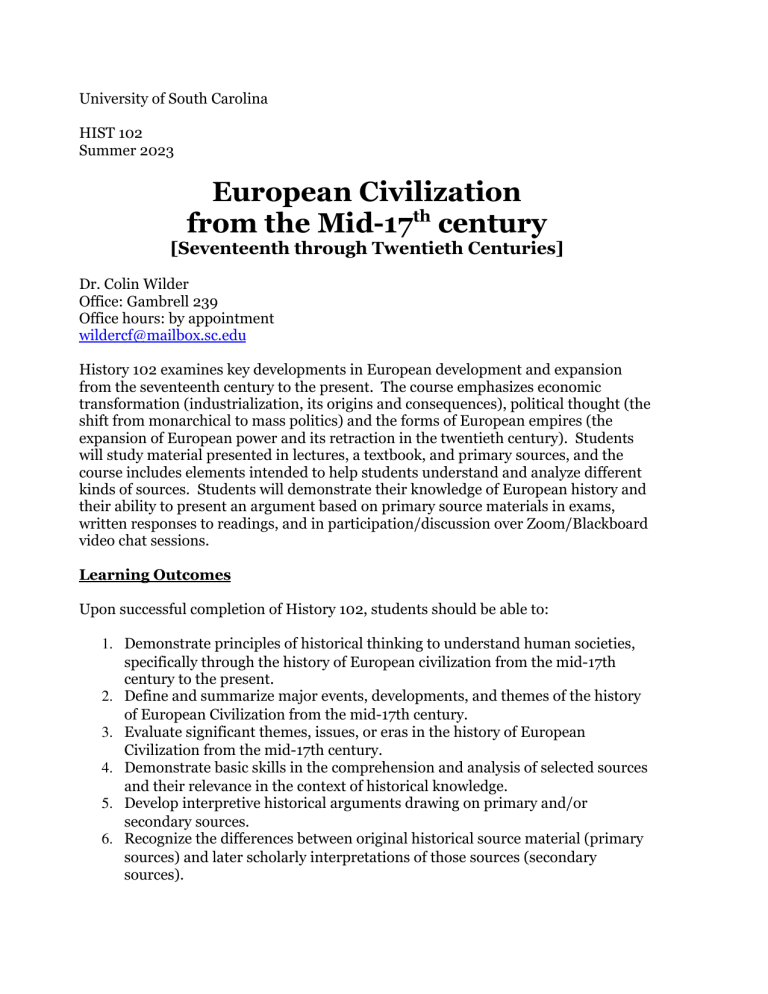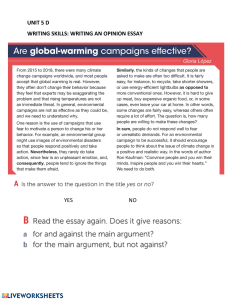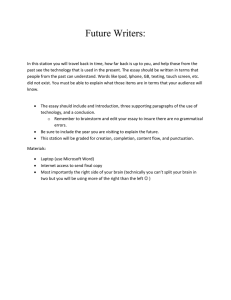
University of South Carolina HIST 102 Summer 2023 European Civilization from the Mid-17th century [Seventeenth through Twentieth Centuries] Dr. Colin Wilder Office: Gambrell 239 Office hours: by appointment wildercf@mailbox.sc.edu History 102 examines key developments in European development and expansion from the seventeenth century to the present. The course emphasizes economic transformation (industrialization, its origins and consequences), political thought (the shift from monarchical to mass politics) and the forms of European empires (the expansion of European power and its retraction in the twentieth century). Students will study material presented in lectures, a textbook, and primary sources, and the course includes elements intended to help students understand and analyze different kinds of sources. Students will demonstrate their knowledge of European history and their ability to present an argument based on primary source materials in exams, written responses to readings, and in participation/discussion over Zoom/Blackboard video chat sessions. Learning Outcomes Upon successful completion of History 102, students should be able to: 1. Demonstrate principles of historical thinking to understand human societies, specifically through the history of European civilization from the mid-17th century to the present. 2. Define and summarize major events, developments, and themes of the history of European Civilization from the mid-17th century. 3. Evaluate significant themes, issues, or eras in the history of European Civilization from the mid-17th century. 4. Demonstrate basic skills in the comprehension and analysis of selected sources and their relevance in the context of historical knowledge. 5. Develop interpretive historical arguments drawing on primary and/or secondary sources. 6. Recognize the differences between original historical source material (primary sources) and later scholarly interpretations of those sources (secondary sources). Units of Study There are 13 units of study in this course. 1. Scientific Revolution 2. Empires, mercantilism, liberalism 3. The Enlightenment 4. The French Revolution 5. Industrial Revolution 6. The Malleability of Society 7. Science, Culture, and Empire 8. The Great War 9. Interwar period 10. The Second World War 11. Genocide 12. The Cold War 13. The End of the European World Order That makes about one unit per official day of class. The units are of different sizes. For example, we will cover the scientific revolution briefly, but the units on WW1 and WW2 are each much longer. Homework Time You should plan to dedicate about 2-4 hours per day of this term to READING alone. This does not count time watching my video lectures. Some units reading will be shorter, some longer. For example, the scientific revolution unit has about 22 pages of reading total. The next unit, on European trade empires, mercantilism, and freedom of trade, has about 71 pages of reading. And so on. To stay on track, you should plan to watch the video lectures for, and do the readings and assignments related to, ONE unit per day. Video Lectures Since this class is virtual and asynchronous, we will not have the ability to meet face to face, alas. As a substitute, I will make and upload to Blackboard video lectures of slide presentations. These will be the main way that I communicate my knowledge of the subject to you. I will not separately upload the slide decks themselves. Course Readings Two books are required for purchase: a. Erich Maria Remarque, All Quiet on the Western Front. Please note that the various film and TV adaptations of this book, include the recent one, differ from the book. Please do not choose to “save time” by watching the film or video instead of reading. Besides, the adaptions are not the same and I know the differences. If I detect that your knowledge comes from the film or TV version rather than the book, you will be penalized. b. Timothy Garten Ash, The Magic Lantern Both books are available in the Bookstore. Beyond these, there will be many short readings. I will make these available in electronic form via Blackboard. They will be in MS Word or PDF format or occasionally as web URLs. For later units of the class (20th century) there will also be some audio and video clips to listen to/watch. Blackboard & Sources Your main place for information, your homebase, for the course is the course Blackboard site (section 000 “Supersite”). Many of the course materials are primary sources – that is, they are documents written by historical actors during the period that we will study. In contrast to these, we will also read chapters from a modern textbook (in electronic format). The textbook is a secondary source, that is, something written by twenty-first-century historians for twenty-first-century students. Attendance? Since this course is virtual and asynchronous, there is not attendance as such, in the sense of going to class in person. You are simply assigned certain tasks, such as reading, taking exams, writing responses, and participation. Your grade is based on my evaluation of your completion of these tasks. Electronic Discussion / Participation All students will attend and participate in six (6) live discussions, to be held either over Zoom, Blackboard, or another electronic video platform of the instructor’s choice. I will attempt to schedule these at days and times most convenient to the largest number of students in the class. Most students most of the time should try to attend these. I will make every effort to create a signup system to keep these discussion groups as small as possible, ideally around 5-8 students. Discussion sessions will last 30 minutes each. In the event that a student cannot attend any discussion sessions in a given week, he or she may make an appointment with the instructor for a special day and time one on one video discussion. All of these electronic discussions will be part of students’ grade, in place of a normal in person participation and attendance grade. You should come prepared to these discussions, having read the material assigned by that day and ready with ideas, questions, and knowledge. Naturally, if you have to sign up for a one on one conversation with me, you will be more “on the spot” to show your knowledge of the material. Exams This course has three exams, scheduled on the following days: 1. Friday, June 2 2. Friday, June 9 3. Thursday, June 15 The exams are not principally cumulative, but may refer to or require mention of material studied in previous weeks of the term. So there may be a little bit of cumulative knowledge required. Reading Responses Your third area of evaluation will be in writing three (3) responses to the readings. The format of these is as follows: Each will be 600-1000 words long. I will give out prompts; you choose which one prompt to write about. The prompts will often be based loosely on reading questions found here and there next to the reading assignments (in the scans). The third week’s prompt will however be on either the Remarque novel or the Ash book, rather than on an electronic scanned reading. Grades will be calculated as follows: Exam 1 15% Exam 2 15% Exam 3 15% Reading Responses 30% Participation 25% Letter grades are on a 100-point scale (A=90-100, B+=88-89, B=80-87, C+=78-79, C=70-77, D+=68-69, D=60-67). Grading Rubrics ● A written response, whether a response to a reading or an exam essay, will score an A (either written in class or as homework) when it includes an introduction that states your thesis plainly and explains what the main points of your paper will be. Each paragraph in an A paper makes one point in support of your thesis and cites evidence from the texts in support of that point. An A essay will make at least three main points. An A essay will have a conclusion that reminds the reader of your thesis and of the main points that you used to support it. Finally, an A essay will be carefully proofread and contain no grammatical errors. ● An essay that scores a B will have most of the components of an A essay but its use of evidence and its organization may be weaker. It may contain a few grammatical lapses. ● An essay that scores a C may have difficulty articulating its thesis; it may make only 2 solid points rather than 3; or it may lack a conclusion. It may also contain more serious grammatical errors that suggest unclear thinking or a failure to proofread adequately. ● An essay that scores a D fails to organize its argument into paragraphs or uses textual evidence only minimally. It may reflect basic misunderstanding of the meaning or significance of the evidence it includes. It may contain more serious grammatical errors that fundamentally impair the student’s ability to communicate. ● An essay that scores an F fails to answer the question and shows that the student did not understand or did not consult the material under discussion. It is likely to be disorganized and to contain serious grammatical errors that make it difficult to comprehend. Students with disabilities should speak to Dr. Wilder about appropriate accommodations. Academic honesty The USC Code of Academic Responsibility calls on students to “adhere steadfastly to truthfulness and to avoid dishonesty, fraud, or deceit of any type in connection with any academic program.” We will report any instances of plagiarism or cheating.



